Also available in:
Ελληνικά
Κάναμε μία εβδομαδιαία εκδρομή για να δούμε μερικά από τα αξιοθέατα των πανέμορφων Ηπειρώτικων περιοχών στα Τζουμέρκα και τα Ζαγοροχώρια. Μια βδομάδα βέβαια στα Τζουμέρκα και τα Ζαγοροχώρια είναι ότι πρέπει για να πάρεις μία μικρή, το τονίζουμε, μία μικρή γεύση από 2 μοναδικούς στην Ελλάδα ορεινούς προορισμούς της Ηπείρου και σε μεγάλο μέρος του νομού Ιωαννίνων. Ανανεώσαμε και ελπίζουμε να το τηρήσουμε το ραντεβού μας για την επόμενη άνοιξη όταν οι καταρράκτες και τα ποτάμια θα βρίσκονται στο μεγαλείο τους και στις δύο περιοχές.
Πριν φτάσετε στα Τζουμέρκα ή το Ζαγόρι θα προτείναμε να κάνετε τις εξής στάσεις ξεκούρασης όταν θα έχετε ήδη μπει στην Ήπειρο. Την λίστα με τους προορισμούς την επισκεφτήκαμε την πρώτη μέρα ταξιδιού, εκτός από το σπήλαιο Περάματος που θα βρείτε λίγο μετά τα Ιωάννινα, ερχόμενοι από τη γέφυρα στο Ρίο-Αντίρριο και είναι ταξινομημένη γεωγραφικά από νότο προς βορρά.
Sights and stops before Ioannina (or a little after)
- Lake Zirou, simply beautiful. Everything you need for a swim or SUP if the weather is nice.
- Roman aqueduct of Nikopolis with the Louros River at your feet.
- Luru Springs (Vouliasta). Don’t miss it, the colors are unique.
- Ancient theatre of Dodoni (archaeological site, 8 euro entrance fee)
- Perama Cave (In Perama, next to Ioannina, 7 euro entrance, every half hour). Shocking, if you pass by there, whether you go or come is worth a thousand.
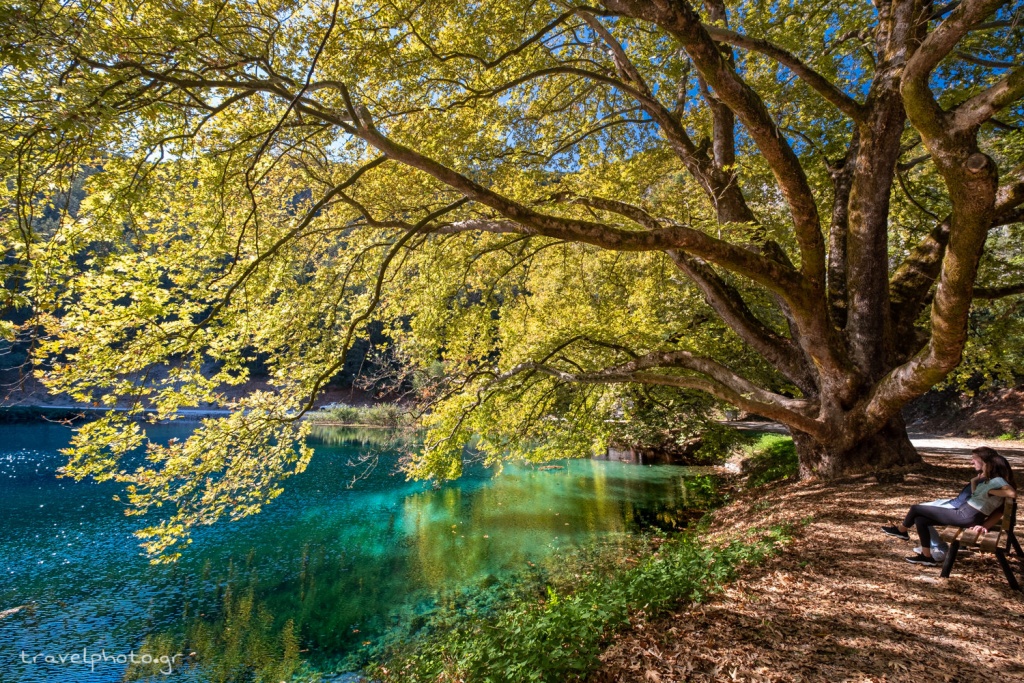
First day and arrival in Tzoumerka
We started from Athens at 8 in the morning and after being stuck for half an hour on Attiki Odos, we passed Elefsina and Isthmus to get to Olympia Odos for good. Perfect road, lots of expensive tolls until we reached the Charilaos Trikoupis bridge (Rio Antirrio) where we paid another 13.5 euros. Then, we enter directly into the Ionian Road which is completed until Ioannina. All in all it is about 40 euros for the toll from Athens to Ioannina but the road is windy as they say. Before we get there though, we decided to rest and enjoy the first 4 sights mentioned in the list above.
Coming out of the 4th, the ancient theatre of Dodoni, the hunger had hit red and after we contacted the first accommodation we were suggested to eat in the village of Koutselios in the tavern Zagorisios. A fine meal and just before it got completely dark we set off for Tzoumerka. First destination was the village of Kalendzi and the Rodami guesthouse which we arrived at night of course. Perfect room-apartment, breakfast quite hearty and our host perfectly informed about the area. He gave us several tips to spend the whole day starting with the Klifki waterfalls.
The tour there starts over the gorge of Arachthos with an impeccable view of the mountains and the river that crosses them. We saw them rafting and were quite jealous it’s true. It’s worth going down to the big waterfall (300 metres difference in altitude from where you leave the car) and if conditions allow, reach the bank of the Arachthos, walk to the right on the rocks and discover the pedestals and the end of the stream with another small waterfall, the Arachthos River.
At the bridge of Plaka
Leaving Klifki, on the way to our final destination for the day, Syrrakos, we passed by the impressive bridge of Plaka. If you haven’t heard, the old bridge (from the 1800+) completely collapsed in 2015 but thankfully a reconstruction was completed in 2020.
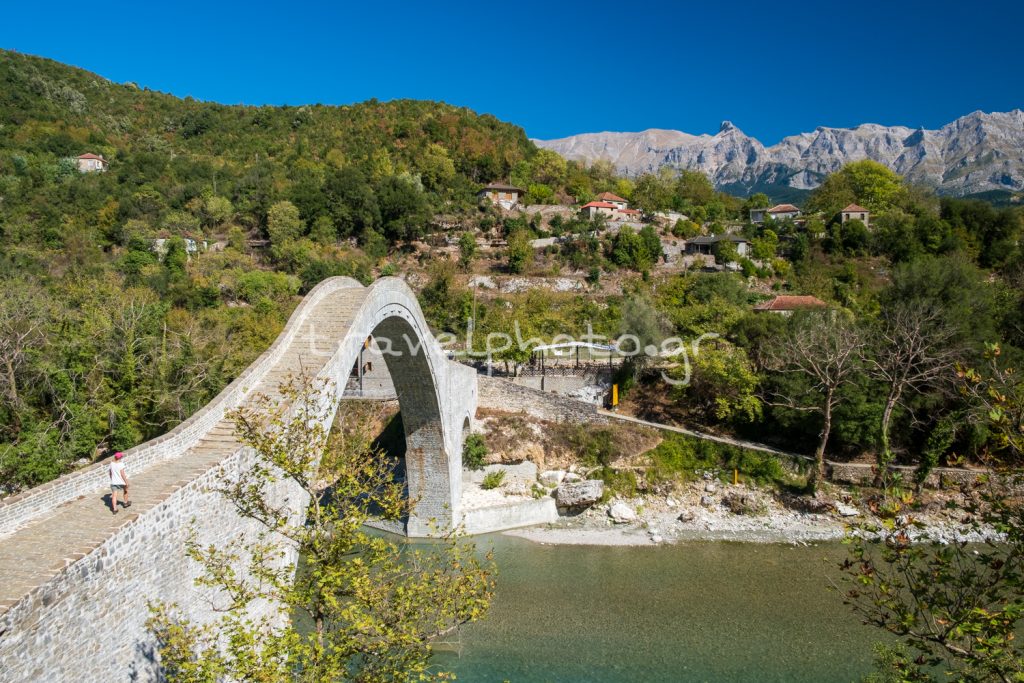
The “whiteness” of the new stone makes a bang from afar, of course, but we have no complaints, after all, the previous old bridge was built on the foundations of an older one that had also collapsed. The River Arachthus seems to be not kidding! Cross the bridge and climb the slope, it has a nice view of Tzoumerka (Athamanian Mountains)!
Cave Windhole
Continuing on the road to the final destination of the day, we said Syrrako, we pass by the village of Agnanda, admire the mountain range of Strogoula and arrive just outside the village of Ktistades and stop at the cave Anemotrypa. Be sure to visit it, the guide Manolis does a great job and the cafe above is perfect for hanging out under the fir trees listening to traditional Epirotika with their clarinets and buying spruce honey and other perfect herbs for all uses.
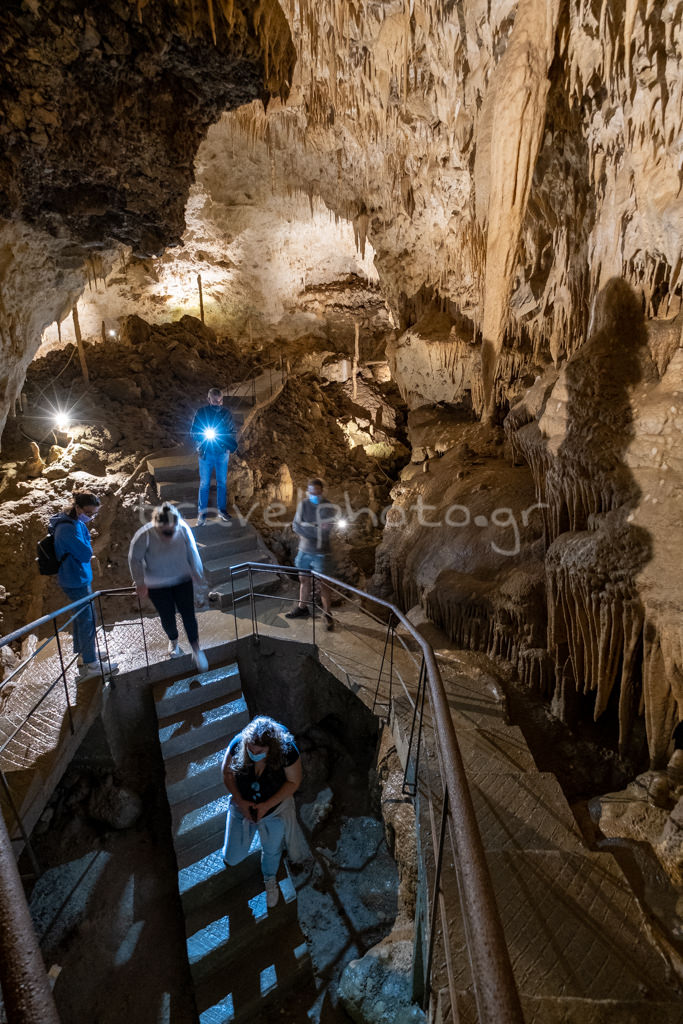
The cave is amazing and from next year the guide Mr. Manolis told us that the cave will be extended to the underground river, which until now we only heard about without seeing it. It should be quite impressive and we want to go back just for that. Don’t miss the sleeping bats that fan out on the roof of the cave.
Pramada and arrival in Syrrako
Shortly after the cave of Anemotrypa we reached the head village of Pramanta , which is the largest village of northern Tzoumerka. There it is worth visiting the large square with the plane tree, to eat at the butcher’s tavern of Bootza (delicious turbot and veal in the pot) and to hang out for coffee at Hayati with its sophisticated music and beautiful wooden benches. After Pramanta we reached Melissourgoi, but we didn’t go down to the village because it was getting dark, but we sat just outside the picturesque red chapel of Cosmas the Aetolian, who had taught in 1797 in the square of Pramanta!
Almost at night we started the long road to Syrrakos which, while reaching low at the level of the Kalarritikos river, takes you up to 1200 meters where the village is located.
Be careful on the road because it has:
- several large stones fallen from the vertical rocks on the side of the road
- many frogs (unknown why they are at such a high altitude)
- bats, we were scraped by a large owl, not that he doesn’t know where he is going but the driver might be frightened
- and most importantly: wild boars!!!! We were passed by, fortunately not too close to the car, by a mother boar with 4 wild boars behind.
And then we reached the beautiful Syrrakos. The evening we arrived, of course, we got a bad impression of the big white lights of the square, they don’t fit at all with such a beautiful and traditional village.
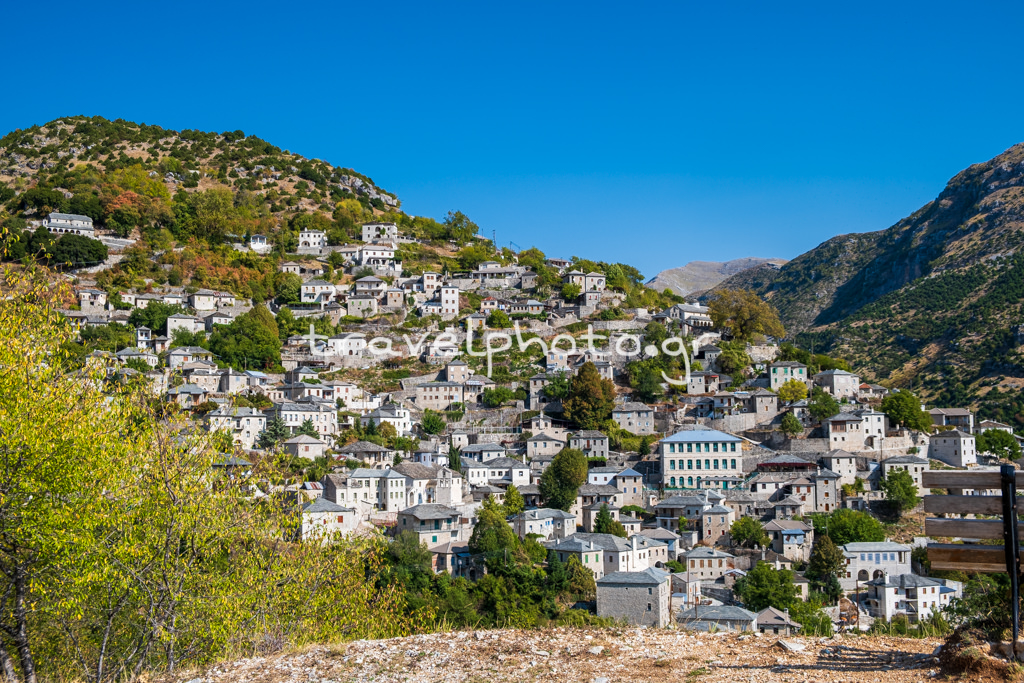
Day two in Tzoumerka
We woke up and after breakfast we started our walks all over Syrrakos, It is worth reaching the highest point to enjoy the view of the village and the slopes opposite. As you leave, don’t miss to hang out across the road from Syrrako, on the bench to enjoy the architecture of the houses and the gorge to the left of the village. There is also a trail that connects Syrrako to Kalarrites but we didn’t have time to do it, mainly so we would have an excuse to go back :)
Holy Monastery of Kipina and Kouyasa Puliana path.
The next stop was the historical monastery of Kipina. Apart from its historical and religious interest, Kipinas Monastery is famous for being built on a vertical rock with the monks’ cells and the small reception room literally hanging in the void. You should also go inside the monastery and ask to have all the visiting rooms opened if they are not open so you can see the kitchen with the crypt, the monks’ cells with the lounge and the cave. We were lucky because we arrived with a guest coach and the manager there opened all the visitable areas. As soon as the coach left, they closed the areas and there was no one there. I wanted to buy a souvenir and there was no one to pay, I don’t know if this is generally the case but we were surprised.
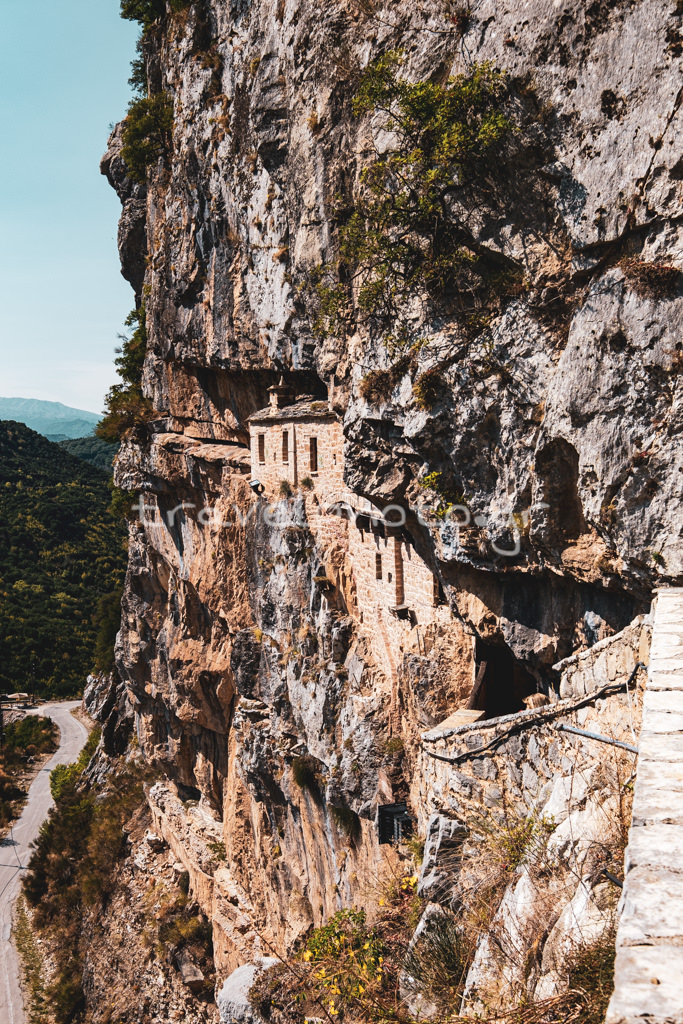
Just before the next destination, which was the village of Kalarrites, and a few kilometers after the Monastery of Kipina, be sure to go to the path with the strange name: Kouyasa Pouliana!
Continue to the small but enchanting path to see the first waterfall (which starts from very high up, even if it doesn’t look like it) where the cafe is located, and continue for another 5-10 minutes walking to the second waterfall (photo just below) with the large pedestal for diving and swimming (we were jealous that we were not summer to dive).

A unique and huge irregularity is the generator of the cafeteria in the area that causes noise and a bad smell from the burning oil. It is really a wonder how you can go to an area of infinite natural beauty and instead of hearing the waterfall and smelling nature, you hear the generator and smell oil! Of course we didn’t sit down for coffee or anything else. The bad thing is that we wanted to hang out somewhere nearby but we ended up “running away” (Oct 2021 this, hopefully in the future something will change)
In the unique Kalarrites
The final destination for the day, in terms of sightseeing, is the village of Kalarrites , which became famous as a unique quality centre of silversmithing and a nursery of silversmiths. We walked all over it and enjoyed the unique view of its picturesque houses, the gorge and the mountains of Tzoumerka, until finally hunger got the better of us and we ended up just above its beautiful and picturesque square, at Napoleon‘s grocery-coffee shop-turned-tavern, Akanthos.
There, along with the food, we drank the finest red wine I have ever tasted, which, as Mr Napoleon Zaglis told us, comes from Zitsa in Ioannina (we also drank red wine from Zitsa in other taverns, but while it was nice, it was nowhere near the quality of Napoleon’s).

We fed the big red cat of the village and took the roads by car to get to the accommodation we had booked, which was located in the distant …Gardens in central Zagori.
The Baros mountain road pass, from Tzoumerka to Zagorochoria!
Luckily we had caught the conversation in Syrrakos during breakfast, with a couple who suggested we take the mountain route rather than returning from Pramantas (the route usually suggested). This route is known as the Baros Pass and is the second highest, purely unpaved, road route in Greece (Oct 2021). Beautiful and wild alpine mountain scenery, a spectacular peak, several cattle on the road, caution and no gawking by the driver, and a huge fir forest until you reach Anilio, just across the road from the imposing Metsovo.
There, we took the Egnatia road and because it was night, we followed it until the exit for Ioannina and not for Zagorochoria because it has several turns and it is not the best at night especially when you have driven from Kalarrites. Be careful of the weather though because the Baros pass reaches 1,905 meters and in northern Tzoumerka it is known that snow is no joke.
Accommodation in Tzoumerka
Sightseeing in Zagorochoria, villages and bridges.
- First destination and one of the best is the Dilofo. We stayed at the Dilofos Mansion (full worth) and ate at Lithos, this tavern is a must eat! Everything we had was amazing, with good red wine in bulk. Definitely walk around the perimeter of the village, for nice views.
- Village Gardens: We stayed at Mahala. We stayed at Maha Mansion. It wasn’t bad though and you could get by. In Kipi I would recommend going up to the church of Agios Nikolaos, 1700+ with a stunning view of the village and Pindos. Heading towards Kipi you will come across the 2 most famous stone bridges in the area, the Noutsos or Kokkoris (or Kokkoros, call it what you want, they will understand if you ask :) ) and the third-rate Kalogeriko. It’s worth stopping for photos at both.
In addition, near there, there is the bridge of Captain Bear, Laskaridis and Pitsionis. All three are beautiful and especially Laskaridis’ is right before the Gardens. I think Pitsionis’ is after the Gardens and is worth a visit while Captain Bear’s is a few kilometres before Kokkoros as you go from Dilofo to the Gardens.
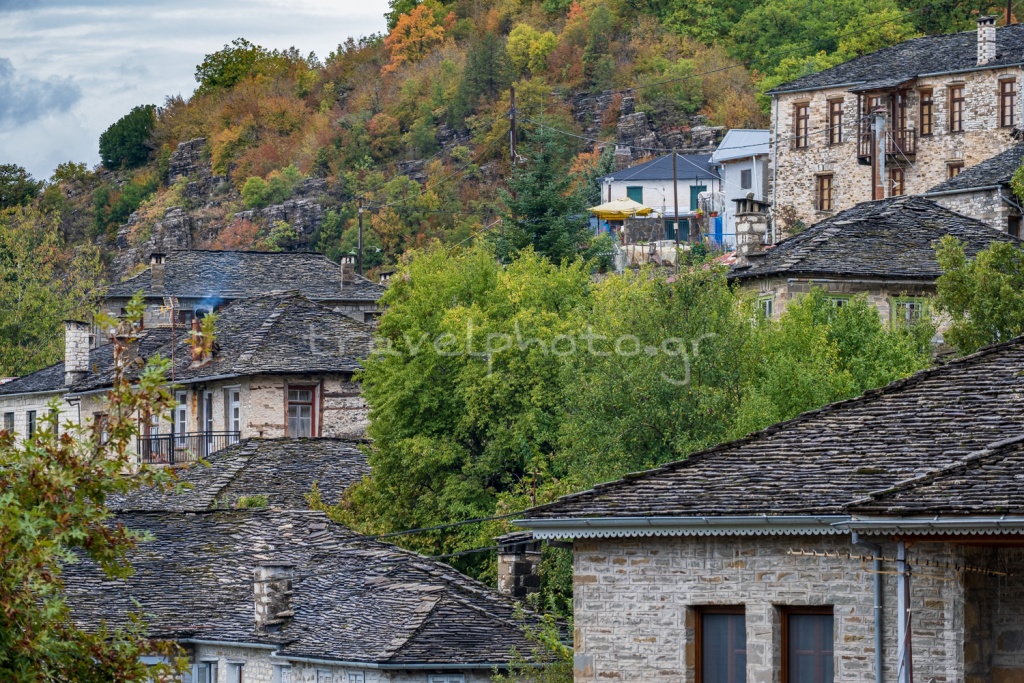
- In this part of Zagori I would recommend a visit to Koukouli and its square, Kapesovo (along with Mikro/Megalo Papigo and Dilofo it is one of the 4 designated traditional/authentic villages of Zagori) and Tsepelovo (where we ate delicious nuts in bulk from a walnut tree that was “dropping” them at the time). In Tsepelovo we were told to eat either at the one in the square (the Little Bear) or the one just before you enter the village for ribs.
Accommodation in Zagorochoria
Ladder of Vradeto and Beloi, view of the Vikos Gorge
- Shortly after Kapesovo there is a sign for the village of Vradeto. It is worth going there to see at the beginning of the road the Skala Vradeto on the opposite slope (stone steps on a vertical slope that until the 1970s(!) connected the village of Vradeto with Kapesovo and the rest of Zagori) and the viewpoint of the Vikos gorge called Beloi.
To get there is a bit difficult but it has the most beautiful view of the canyon which we found breathtaking. From the beginning of the village of Vradeto, it’s a 2.5km walk, some on a gentle dirt road and most on a relatively straight path but with rocks which is a bit tiring (we did it at the end of the day so it felt a bit like it). It’s insanely worth it.
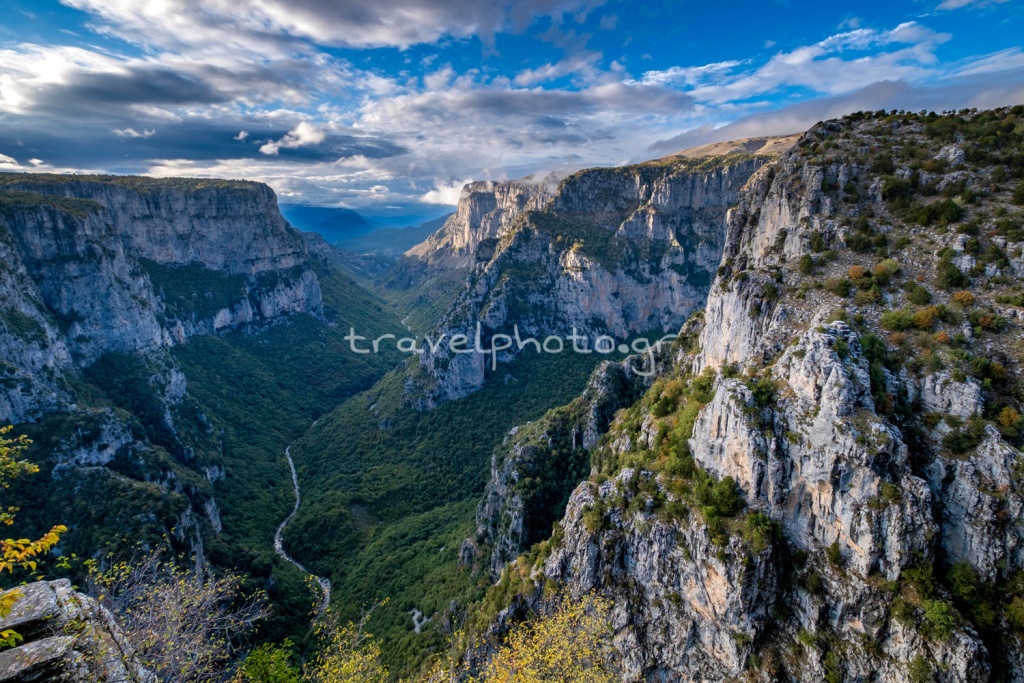
Vitsas, Monodendri and Oxya for the Vikos Gorge
- Leaving this area, you go more centrally, stopping at Ano Pedina (we didn’t go but we were told it was nice, it has a monastery worth visiting, we have left it for next time). So in the more central area you will meet Vitsa, definitely stop to see the square of Kato Vitsa with its huge plane tree and the view of Ano Vitsa. After Vitsa is Monodendri, the most touristic village of Zagori with a nice square. From there, on foot it is worth going to the 14th century monastery of Agia Paraskevi, with a nice view and handmade hagiographies.
- For food in our area they recommended “Sta Roots” and “Cinnamon and Cloves”. Both were said to be good. We didn’t happen to eat at either one though so I don’t have a personal opinion.
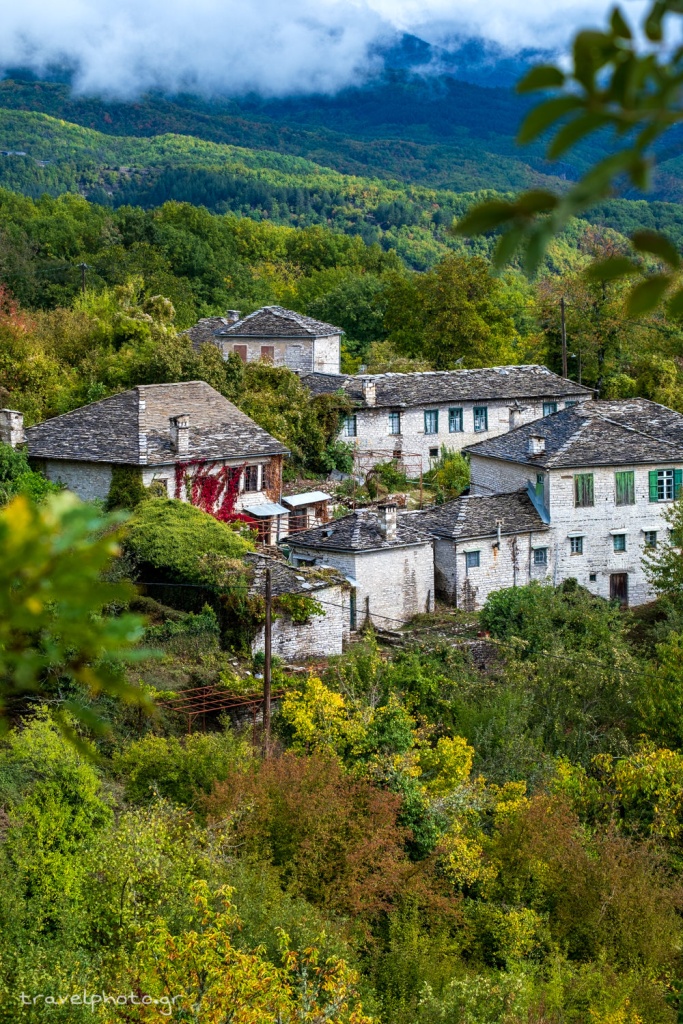
- From Monodendri, you should definitely go by car, to Oxya (less and easier walking compared to Beloi) with a very nice and imposing view of the Vikos gorge. To get there you pass through the “Stone Forest” with some special spots and strange rocks.
Below Astraka: Vikus, Small and Big Papigo.
- We leave this area and go further north where we will visit the beautiful Aristi, walk it from the traffic light all the way up around the perimeter and end up back in the small square. After Aristi you either head towards Papigo or towards the village of Viko. Be sure to go to Viko, it has a wooden pavilion with a super view of the gorge (geographically it is just across the road from Beloi’s site) and find Mr. Kostas who has put out tables on the plot next to the pavilion and is waiting for permission to start serving coffees and more.
It also has a shop with traditional products. Vikos is a very small village so apart from the view there is nothing else I think but it is worth a visit.
- And then we’re off to Small and Big Papigo. Before the bends start, stop at the bridge of Aristi , through which the Voidomatis. Stunningly frozen, crystal clear and turquoise waters. I would suggest a walk along the river to the north (to the left that is if you park facing the river). It has a path through the plane trees which, if you find the spot, is not difficult though, becomes a stone path with an arch and a nice view of the river and Astraka.
- From the bridge of Aristis the turns and horseshoes start, so you better not have eaten before the ascent to Megalo Papigo. At Megalo Papigo stop for a walk, it is as the name says, big, so it has different spots from where you can see parts of the traditional settlement. We walked them all and it was well worth it.
Megalo Papigo is the most in village so you are likely to see people who have escaped from a hairdresser… Shops for super pies and gifts are “the Sterna” (perfect grass pie and sweet rose), Rogovo (the vendor is a nice guy) and Koukounari (very young place, full of young people mostly, with huge grass pies and other things of course that we didn’t have time to try). There will definitely be other shops but we didn’t have time to visit them. For food we were told“Astra” but we didn’t happen to eat.
Under the epic Astrakhan: Small and Big Papigo
- And we close with my favorite Little Papingo. But before you get there, it’s a must stop at Ovires (it’s on the road from Megalo to Mikro Papigo, you can also find it as Kolimbithres but the correct name is Ovires). You have to be careful because there are rocks that are slippery but we went all the way because before the beginning of October there wasn’t much water.

- In addition, before you reach the small Papigo and from several points of the big one you will have the opportunity to see the imposing towers of Astraka. Mountains that with a little imagination look like dragon’s teeth (2400+ meters the highest peak). Mikro Papigo is right below and the view as you go into the village and while walking around is breathtaking.
In Mikro Papigo we stayed in the first guesthouse next to the first parking lot, Papigo Towers. Fine, good breakfast but a little out of place with the music and the decor of the breakfast/restaurant area. For coffee and a unique view of Pinocchio, outside if it’s not cold of course. For food don’t miss to go to Jupiter. Perfect bean soup, sausage, mezzovone and ribs, in general everything we had was delicious.
Accommodation in Papigo
- We even went twice. We sat outside with a stove because inside there was enough light and nothing special in terms of decoration while outside in the courtyard it was very beautiful. In Mikro Papigo, walk until you reach the last houses to the right and not from where the 1700 guesthouse is and the paths to Drakolimni.
And of course to visit the beautiful village church. Finally, in Mikro Papigo you will find the information center of the area where the fully informed Kostas can solve your questions and create new ones by suggesting new sights and routes. We went and chatted with him for at least half an hour! - If you have time you should also go to the old stone bridge of Kleydonia, it’s a bit out of the way and we didn’t have time now. I was there 15 years ago though and it is beautiful as the only Boydomatis passes underneath.
There is a beautiful path that takes you very close to the bridge of Aristi (1.5 hour walk) but from what we were told it is recommended for spring, summer and September. If we had an extra 1-2 days we would definitely do it anyway.

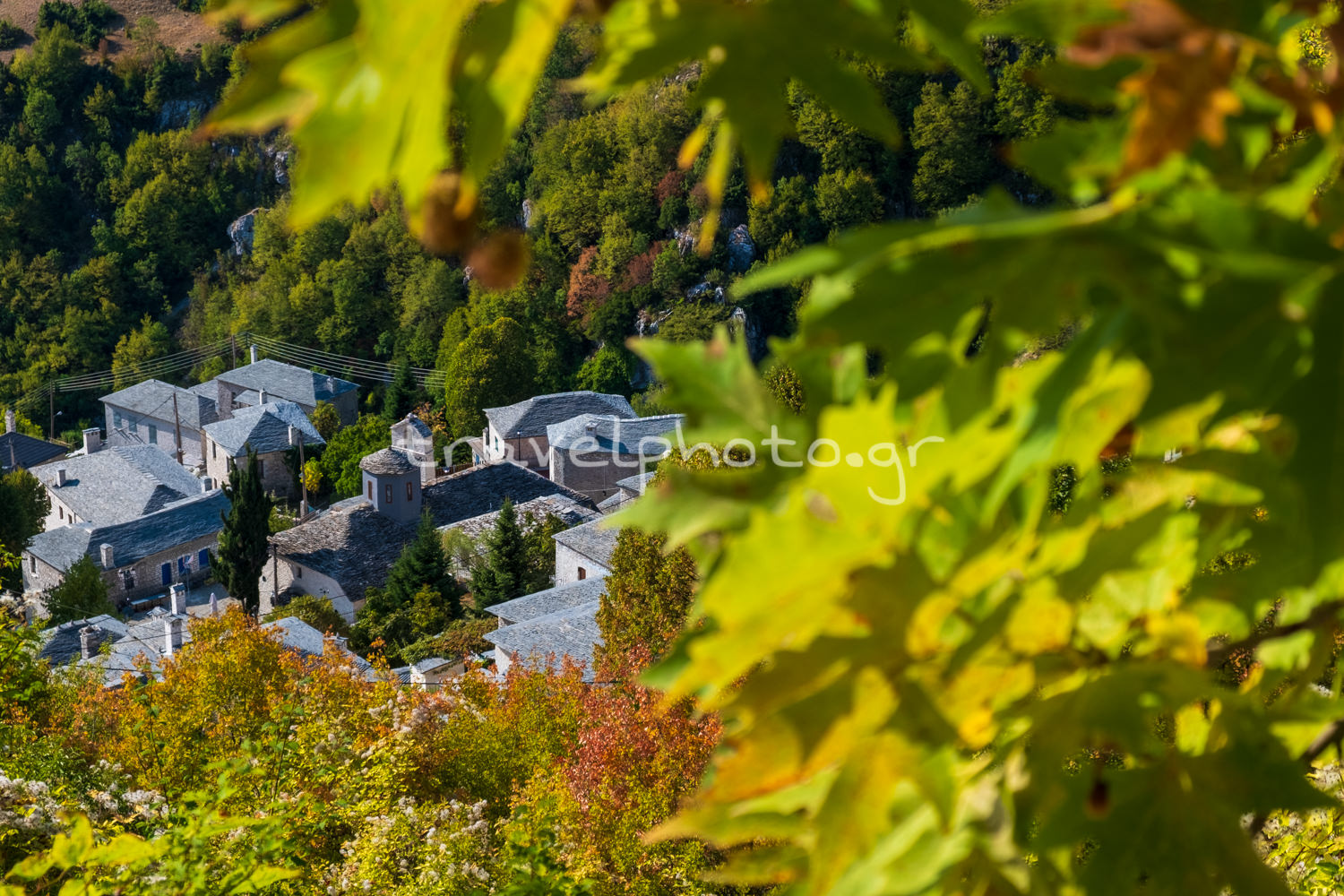
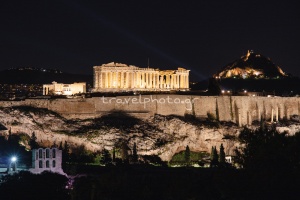
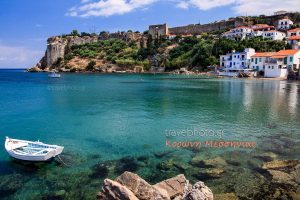
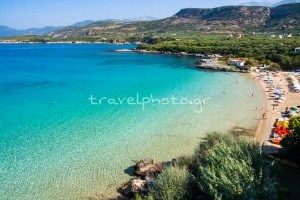

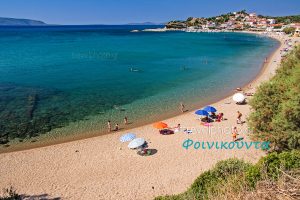
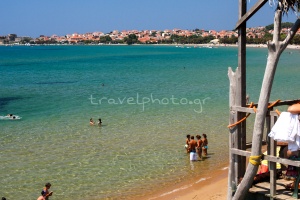
Leave a Reply